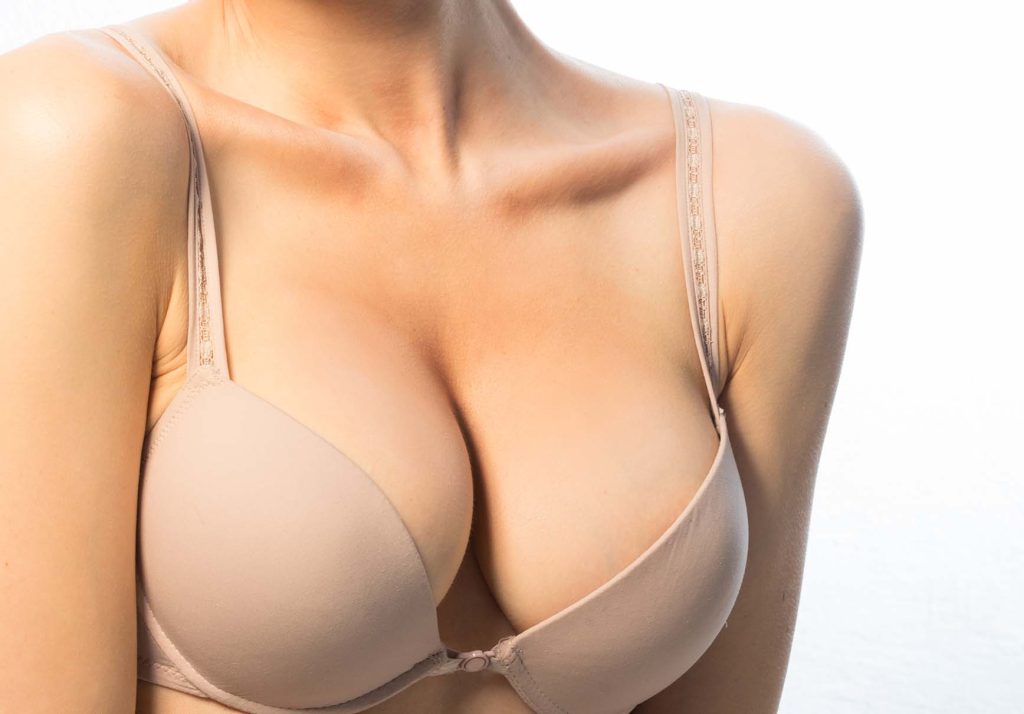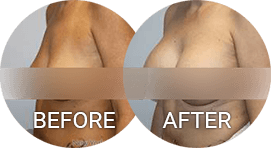Breast Implant Exchange
Consultations offered at our two convenient locations in Manhattan and Long Island, NY

After a patient receives a breast augmentation, there is a point in time where the implants used must be exchanged for new ones. During this procedure, the old implants are removed and new ones replace them, usually using the exact same incision points to avoid creating any new scarring.
Serving New York City and Long Island, Dr. Gordon Andan is a board-certified cosmetic surgeon who focuses on natural results and a customized approach. He and Dr. Carey J. Nease perform a wide array of cosmetic procedures at New York Surgical Arts to help their patients look and feel their best. To schedule a comprehensive and personal consultation with us, please call us directly at (516) 746-0155. We also provide this convenient contact form to fill out at your leisure.
Contents
- 1 All About Breast Implant Exchange
- 2 Benefits of Breast Implant Exchange
- 3 Ideal Candidates for Breast Implant Exchange
- 4 Personal Consultation
- 5 Preparation
- 6 Breast Implant Exchange Procedure
- 7 Recovery & Results
- 8 Complementary Procedures
- 9 How Much Does Breast Implant Exchange Cost in New York?
- 10 References
All About Breast Implant Exchange
Breast implants are not considered “lifetime devices” and should be replaced after a certain amount of time. Whether they are silicone or saline-filled, these implants age with time. Although not every breast augmentation patient needs multiple implant exchanges within their lifetime, the older the implant, the higher the likelihood of a necessary implant exchange.
It is important to have your breast implant checked periodically by an experienced cosmetic surgeon, especially if you notice any swelling or lumps in the area. There are many reasons patients may need breast implant exchange surgery, including capsular contracture, implant rupture, and implant malposition (shift), all of which can happen even after successful breast augmentation surgery.
In the US, capsular contracture and implant rupture have remained the two main complications that require surgery to remove and replace breast implants. This leads to revision surgery, often the only effective solution for implant complications. (1)
Capsular Contracture
This complication occurs when the body increases the regular production of fibrous material surrounding the “foreign” breast implant after augmentation surgery. Capsular contracture causes the breast to become stiff and increasingly painful if not corrected. The body’s production of this fibrous material helps keep the implant in place after breast augmentation surgery, but overproduction can become painful and often impacts the patient’s well-being. (2)
To remedy capsular contracture complications, surgical intervention is often necessary. This can lead to a procedure called a capsulectomy where the capsule created by the body after implantation is completely removed along with the current implant.
After the capsule is removed, a new implant may be inserted if the patient desires. Removing this capsule, however, does not guarantee that contracture does not recur. It is very important to consult your surgeon if you are impacted by capsular contracture to determine whether you are a good candidate for implant exchange. (3)
Implant Rupture
Patients with ruptured implants often present with lumps, redness, and unusual swelling in the area. Ultrasound imaging can be used to diagnose this complication, but sometimes patients can know if their implants have ruptured just by feeling them. If the implant is hard or inflamed, there is a possibility of rupture. However, there is no danger of silicone leakage in most cases. (4)
Implant Malposition
Much less common, implant malposition is when a breast implant shifts position either within or outside of the pocket in which it was placed. This may lead to the implant migrating outside of the natural breast boundaries, usually either below the lower fold or out toward the armpit. This complication can occur if the breast tissue supporting the implant weakens.
Anaplastic Large-Cell Lymphoma
Also referred to as ALCL, this is a very rare form of non-Hodgkin’s lymphoma that can develop in patients with breast implants. If this complication is detected, the implants are removed and the patient often undergoes chemotherapy and/or radiation to treat it. It is not always clear if implant replacement is safe for the individual. (4)
Benefits of Breast Implant Exchange
Many patients benefit greatly from breast implant exchange procedures. This surgery can offer patients:
- Improved breast shape
- Asymmetry correction
- Treatment for capsular contracture
- Replace old or damaged breast implants
- Can be used to change the size, shape, or material of current implants.
- Can also be performed to create a new pocket in patients where the previous pocket is no longer safely concealing the previous implant.
Ideal Candidates for Breast Implant Exchange
If you previously received breast implants, there are a few reasons you may want to get them replaced with a revision surgery. You may:
- Suspect implant damage
- Want to change the size of your implants
- Experience pain or are unsatisfied with how your breasts look after implantation
This procedure is usually performed for medical reasons over aesthetic ones, but if you are unhappy with your breast implants for any of the reasons stated above, then you make an ideal candidate for breast implant exchange surgery.
Patients must also be in good, overall health without any overarching conditions that may impact their ability to heal from surgery. You must be a nonsmoker, or willing to quit before your procedure date.
Personal Consultation
You will meet with Dr. Andan to privately discuss your concerns and experience with your current breast implants. He will examine your breast implants carefully to determine the best way to approach an implant exchange. Dr. Andan is an experienced and detail-oriented cosmetic surgeon who takes the time to customize each patient’s treatment plan to achieve the best results. He asks about your medical history, your previous augmentation experience, and what your major concerns are going forward.
Dr. Andan will perform all necessary lab testing and breast imaging to make sure you are well-prepared for your future procedure. A member of our staff will then assist you in scheduling your surgery at a time that suits both you and Dr. Andan.
Preparation
In order to be properly prepared for a breast implant exchange, you are required to stop all consumption of nicotine and tobacco products for at least 6 weeks before your surgery date. Candidates must also have realistic expectations for what an implant exchange surgery can achieve, especially if they are unhappy with their current breast augmentation. Dr. Andan may also require that you adjust any current medications that may interfere with your procedure. Breast implant exchange surgery is usually an outpatient procedure, so you are also required to find someone you trust to drive you to and from our surgical facilities. It is also a good idea to pick up any prescriptions Dr. Andan writes before your surgery date.
Breast Implant Exchange Procedure
This procedure is extremely similar to your initial breast augmentation, and Dr. Andan will likely reopen your previous incision sites to remove the implants. General anesthesia will keep you comfortable throughout the surgery.
Dr. Andan removes the old implants, examining them closely for any damage. This will help him determine the safest way to insert a new implant. If the size is being increased, he may insert a temporary sizer to make sure the new size can be comfortably accommodated by the surrounding breast tissue. Implants that are too big for one’s anatomy can often create new problems, so this step is crucial.
Once the brand-new implants are secured underneath the breast pocket, Dr. Andan sutures the breasts in layers starting with the deepest tissue layer to ensure there is little to no tension on the skin sutures. He then cleans and bandages the breasts and applies a compression garment.
A breast implant exchange procedure usually takes around 1 to 3 hours to complete.
Recovery & Results
Most patients take about 1 to 2 weeks off of work to recover from their breast implant exchange.
Swelling may obscure your results initially. As you heal, it may take 6 weeks or longer for this swelling to dissipate entirely. It often takes around 6 months to a year for a patient’s breast to feel softer and natural again. As you heal, you may notice a loss of sensation around the breast, particularly near the areola, but this feeling normally returns after the healing period.
As your breasts heal, you will become more accustomed to the feeling of implants. Every patient is different when it comes to healing, so your recovery period may look different than someone else’s.
Complementary Procedures
Breast Lift
Aging skin loses elasticity over time, leading to sagging and loss of volume around the top half of the breast. When this happens, patients have the opportunity to receive a breast lift in conjunction with their implant exchange. For this procedure, Dr. Andan will remove excess skin from the bottom of the breast and lift the areola complex, placing it higher on the breast mound to create a more youthful contour. This procedure can often be easily performed during an implant exchange, and for the right patient, can help create an overall restructuring of the breast.
If you are interested in learning more about cosmetic breast implantation, reconstruction, or other aesthetic procedures performed at New York Surgical Arts, give our blog a read to find more information.
How Much Does Breast Implant Exchange Cost in New York?
Each patient’s circumstances determine their particular implant exchange procedure plan. Whether you are experiencing complications, or just know it’s time for a change in your implant size or shape, your exact price breakdown will be carefully determined during your private consultation.
To schedule an appointment, please fill out our contact form or call us directly at (516) 746-0155.
References
- Kühn S, Georgijewitsch MA, Wehle A, et al. Implant Replacement or Removal: What Happens after Capsular Contracture? A German Study Examining Breast Implant Revision Surgery and Patient Choices in 946 Cases. Breast Care. 2021;16(4):350-357. doi:https://doi.org/10.1159/000509598
- Headon H, Kasem A, Mokbel K. Capsular Contracture after Breast Augmentation: An Update for Clinical Practice. Archives of Plastic Surgery. 2015;42(5):532. doi:https://doi.org/10.5999/aps.2015.42.5.532
- Pelc Z, Skórzewska M, Kurylcio A, et al. Current Challenges in Breast Implantation. Medicina. 2021;57(11):1214. doi:https://doi.org/10.3390/medicina57111214
- Harvey KL, Clark SE. A guide to breast implants for the non-breast specialist. Women’s Health. 2016;12(6):533-537. doi:https://doi.org/10.1177/1745505716687562





